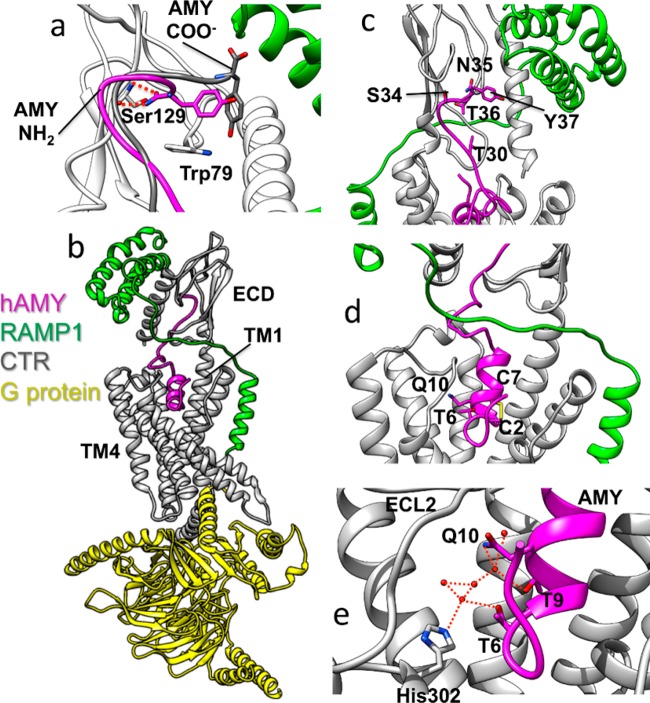Figure 4.
(a) Superposition of the equilibrated CTR:amylin–amide (AMY NH2, magenta) and the equilibrated CTR:amylin-COO– (AMY COO–, gray) complexes. Both peptides are shown in the presence of the CTR ECD (white) and RAMP1 (green) taken from the CTR:amylin–amide simulation. The peptide amide group hydrogen bonds with the backbone of Ser129, while the carboxylate forces the C-terminus to adopt a different orientation. (b) The AMY1 receptor model. (c) The ECD of the AMY1 receptor model. (d) The peptide N-terminal region of the AMY1 receptor model. (e) T6–His302 interactions. Besides the contact between T6 of amylin (magenta) and His302 of CTR (gray), a water-mediated interaction occurs during MD simulations. This is part of a more extended water network, stabilized at the interface between the peptide and the ECL2. Dashed red lines represent hydrogen bonds between donor and acceptor atoms.

